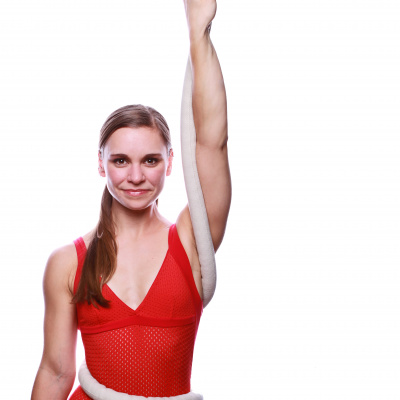Breaking Rules and Everyday Empathy: Circus Lighting Design with Sara Gosses and Jesse AlFord
While writing this series I’ve realized something that I’m a little abashed to admit: when I think of a designer’s job, I first think of the physical skill sets they must have and the technology they need to understand to build clothing, construct props, splice audio tracks, harness electrical currents. In my awe of these abilities, I overlook the art. Every one of my interviewees has set me straight. Take your clothing apart, carry a sound with you, shine a flashlight around, they say. PLAY they say! These professions are no less playful than the clowns on stage. (Whose work is no less technical than a designer, if we really want to banter about it!) Once again, lighting designers Sara Gosses and Jesse AlFord reminded me how playful designing for circus is, and if you’re looking to learn more about lighting design or start a career in it, the first thing to do is get curious and play.
Before I properly introduce my interviewees, let’s cover the basics. “A lighting designer,” according to AlFord, “creates the lighting plan and vision for a production.” Including “where the lights hang, where they point, and what color they are.” AlFord described a spectrum. On one end: “You’re a one-person band hanging the lights yourself with extension cords out of your garage, and you’re sitting there on the ground running the lights for the show.” On the other end: “It can be a very hands-off artistic endeavor. You make a technical lighting plot and send it off to other people. They figure out the timing and the nuance of how the light moves through the production.” He quipped, “You come in, and just say, More blue! That should be faster!” Production budget and the venue’s union status often determines placement on this spectrum.
I was fascinated when Jenny Leigh Du Puis listed the dozens of humans that might come in contact with a single circus costume. I posed the question to AlFord: who is on a lighting team? “I’m holding my hand up like it’s the top, but really there’s a lot [of roles] in parallel,” he started. “A designer makes the lighting plot and gives it to a master electrician. [Who puts the lights where they go and is] making sure that the electricity is laid out correctly. A venue might have a lighting supervisor (who may double as a master electrician). The master electrician manages other electricians (a theater term, not a household electrician) to do the work. Then, the designer works with a programmer who operates and understands the language of the lighting console.” AlFord described how the hand-off from designer to stage manager is integral to the health of a show. “Then you have a board operator who pushes the ‘go’ button.” We chuckled at the role’s seeming simplicity. “The job is much more than that! The board op maintains the whole rig [light placement, color, focus], and they watch the show every performance, which is difficult in a different way. There’s a lot of responsibility on those shoulders!”
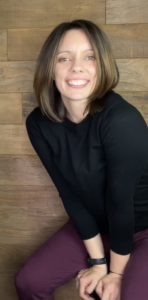
I hold an assumption that most shoulders in the lighting industry belonged to men. Gosses both confirmed and corrected me. Yes, “there’s simply more men in this industry. That’s true in live performance as well as TV and film.” She noted, “There’s an intentionality of broadening that,” and spoke about a few well-known female identifying Broadway lighting designers that, in her words, “are killing it.” She added, “In academia there is a lot of credit given to the women who have built what we do.” Gosses mentioned The Magic of Light by Jean Rosenthal (1972), which is still an authority in the industry; Rosenthal’s principles stand true despite technology rapidly advancing. How Rosenthal wrote cue sheets for piano boards (Gosses made extended pulling gestures as if maneuvering large levers) led into the modern light board.
While imbalance and instances of misogyny do persists, Gosses offered a remedy, “truly listening and not making an assumption before finding out what someone’s interested in.” Personally, Gosses described being given ‘lighter work’ in college which affected her career path. “I missed out on skill sets because I wasn’t given the opportunity to foster [those skills].” The silver lining is the “trickle down effect. When I am leading a crew, or when I am teaching, I try not to always have one person doing the same thing. If I have younger, people who are still developing their identities, I don’t let them get pigeon holed by me or by themselves.”
Beyond a hilarious fascination with the crocodile in Peter Pan, Gosses wasn’t a theater kid. Running cross-country took priority. In high school she joined theater “for the story and stayed for the community,” which in college transitioned to “going for the community and staying for the story.” Prior to working with a mentor, she didn’t realized how integral lighting design was to the creative process and how holistically one could think about it. Still, she wasn’t quite sold. Even after graduating college, she admitted, “I felt like I was dating lighting design.” Going to grad school was her way of getting engaged. Now, as Assistant Professor of Lighting Design at Michigan Technological University, designer for Circus Smirkus and Saks Fifth Avenue, I would say, they’re hitched.
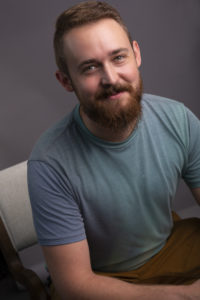
AlFord also has a mentor to thank for his lighting design career. He grew up as a circus practitioner and performer, then segued into teaching. “The reason I work in lighting is purely, I had an awesome lighting professor. If that professor had been a costume designer, I would probably be doing that.” AlFord is a freelance designer. He often works with Louisville Ballet, Circus Flora and has lit Big Apple Circus. Only a quarter of the numerous productions AlFord will light this year are circus. I pondered that the statistics of AlFord’s work calendar might be an accurate microcosm which reflects the greater statistics of live art in the US.
Gosses and AlFord’s kinesthetic knowledge makes them excellent circus lighting designers. (Gosses specifically sought out circus classes in order to understand the genre better from the inside out.) Both expressed that it streamlines their communication with performers and creates a more collaborative nature with the on-stage action. AlFord used a lovely phrase — everyday empathy — which, in this case, translates to a healthy dose of common sense. “If you’re trying to juggle and there’s a spotlight in your eyes, you don’t have to know anything about juggling to know that might not work.” I asked AlFord how everyday empathy extends to the audience. He replied, “It’s all about what the audience sees and their experience. It’s live art! I’m designing for the person seated over there, not the photographer, not the archive recorder. They can come prepared to capture live art. If we’re gonna make a movie of this later, that’s a different conversation. [The audience] is paying money, is here, and that’s who this is for.”
What is specific about lighting circus compared to theater, dance, opera, I asked. AlFord noted, “It’s really hard to find lines [between genres], and arguably irrelevant. There are plenty of moments within circus that I think are operatic.” Once the essence of a moment is identified, AlFord asks, “Does that inform how we artistically enter this moment or support it?” Gosses, who loves nuance, described how circus allows her to go “bolder and maybe even sometimes a little bit more on the nose” than she might with other productions.

Gosses called it ‘safety’ while AlFord called it ‘risk,’ but they spoke of the same thing. AlFord specified that lighting design can be circus-specific by augmenting risk, “making a two high seem higher by making the floor disappear; going to a blackout in the middle of an aerialist’s drop to heighten then danger.” While possible, these moments take research, and research takes time. In reality, “You have fifteen minutes left,” AlFord sped up, “and — because it’s risky to do circus, and you have to be safe — you end up lighting that partner acro piece like a dance piece. Good sidelight on acrobats is great, you did no harm, and they look beautiful. What you’ve done is really excellent work. It is not circus-specific lighting.” Gosses also spoke about time crunch, noting that she will sometimes make a “bigger idea that works for more moments” to work more efficiently, will build cues prior to the cast being in the space, or hang costumes on apparatus to make color decisions without the performers needing to be present.
Both spoke about having to let go of certain creative possibilities to fit the timetable. This made me sad. The way technical rehearsals are scheduled in US productions leaves little time for lighting designers to have all of their elements present: instruments, performers, costumes, director, other designers, lighting team, etc. What is circus missing out on by following this structure? Conversely, what would circus gain if designers (and all of their elements) were present for the whole of the creation process to research, play, and discover? It reminds me of Raphaëlle Boitel’s devised circus work in which light is an essential character rather than a supporting element.
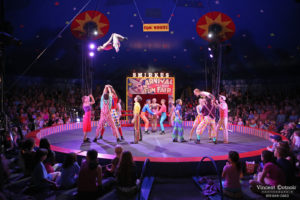
I asked Gosses and AlFord what they needed from collaborators for smooth communication. Gosses was frank, “If you have an idea, you should tell me the idea. If you hate something, tell me! If you love something, I wanna know!” For AlFord, it’s specificity. “Are you talking about the angle of the light, the intensity? The color? Or are you actually talking about timing?” Gosses noted that sometimes performers or collaborators don’t have the same vocabulary as lighting designers. They may not know to say, Don’t pop up, but her longevity in the field allows her to translate what they are asking for. AlFord leaned sideways in his chair, “You can always ask questions without questioning,” indicating that, for some, this might be an unnatural way of communicating. He said, “ask for [the designer’s] opinion, but make sure your needs are voiced.” His example, “Do you think it’s bright enough?” versus, “I need to see the platform.” Questions open a discussion about the mood. Statements might imply the designer missed something related to safety.
For people looking to develop an eye and a language for lighting, both Gosses and AlFord said, get playful and go see shows! “The number one thing,” according to AlFord, “is understanding what light does and how you can manipulate it. The angle — where is it sitting relative to where it is pointing; is it a narrow beam of light or a wide beam of light? Play with a flashlight… It’s easy to do with your face in a mirror. It’s much more fun to do with a friend and a flashlight and a dance studio with a mirror!”
For people interested in a career in lighting design, Gosses said, reach out to other designers. Whether it’s someone you’ve worked with before or someone who lit a show you saw. Send them an email. “Most people who are doing lighting are lighting nerds that are really pumped someone wants to listen.” She also noted people’s busyness, “Don’t take it personally if people don’t have time or space for you.” And on a practical note, since designers often leave once a show has opened, “Go to previews. Go to things early when people might still be around.” She also mentioned that your peers are your strongest collaborators. “Mentors are important, but keep making work with the people you started making work with.”
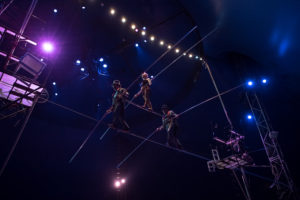
Gosses’s key advice for people starting out in design is to apply for a job or get in a room even if you think you’re not quite ready for it. “There’s a number of things that, were I to do my career again, I would do differently. One is self edit less. I always thought, I don’t want to end up in a room and not know how to do a thing because I don’t want to look stupid. This has kept me out of rooms I should have been in.” We spoke about how this approach takes bravery and resilience, but Gosses assured that applying for a job you’re slightly under-qualified for is less detrimental than one might imagine. “No one remembers the name on the resumes that they didn’t invite in the room.” AlFord echoed Gosses when I asked how someone cultivates excellent collaboration skills. He advised “putting yourself in those situations and working hard at it,” and a skill to cultivate is clarity and teamwork. Is it “‘too dark’ because the horses won’t enter the ring, or because you aesthetically just think it’s bad? Let’s separate these. We need to be unafraid to share those thoughts and have no ego when someone asks, Why did you pick that pink?, because it’s a team effort. That’s where you’re good at your job or not — being a part of that team.”
I asked to hear about a satisfying design moment, and I was interested that both Gosses and AlFord replied with stories that took place in a tent. For AlFord, it was during a Russian cradle act in a Circus Flora show. “Working in a tent it’s easy to find these satisfying moments. All your toys point center ring, which makes it a very clean thing to set up (usually).” He added, “The satisfying moments are when I’m needed the least. If you can set a look and the performer steps into it and uses it, that is awesome, because you’re supporting the work. If [the moment] relies too heavily on the lighting, then there’s too many things at play. If you’re at the circus, you’re there for the circus acts. If you’re just ready to be wowed, you’re not there for the lighting.” AlFord clarified that it’s about aiding versus noticing, which has a lot to do with transitions. Good lighting design is crafted so that “you don’t see the seams. You want to feel the experience of the moment, not notice that the lights are matching the beat of the music. You don’t want to see the infrastructure. You don’t want to see how the sausage is made!”
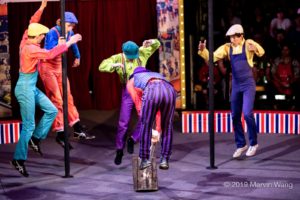
In 2018, at Circus Smirkus, Gosses was itching for a blackout, so she broke a rule. “There’s kind of a rule in the tent: because the sun comes in and it washes everything out, if you don’t have any other lights on, the space looks dead. [It was] the very last number of the show. They jump up, and they all land on the ground. It felt like there should be a blackout. I tried to have it go to a blue or a red or a different color, but at this point we’ve seen all the colors, done all the things. I didn’t want them to disappear, I just wanted that moment — I wanted it to drop like they dropped. So we did it. And it looked good! It felt right. It wasn’t mind blowing. It was not new. Going to blackout is not cutting edge. But I did break a rule (I’m a big rule follower, so whenever I break a rule, I give myself a gold star), and it worked.” Gosses also trusted her team to make the call while on tour. “If four shows down the road it’s not working, change it. I trust you. If it’s not landing, if it looks bad, or the audience is reacting strangely, we don’t have to do it like this.” They built some backup cues, and off they went. The blackout stayed through the tour.
I always end my interviews by asking, what else do you want the CircusTalk readership to know? Gosses said: get in touch! She offered herself as a resource to anyone who is looking to chat about lighting design or learn more about what it means for circus. AlFord reinforced, “It costs zero dollars and five minutes to play with a flashlight to learn what light is capable of. If you work in the arts, that type of exercise is worth it for everyone. It’s really hard to talk about light, but it’s really easy to get better at it!”
...Do you have a story to share? Submit your news story, article or press release.


